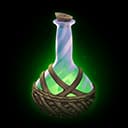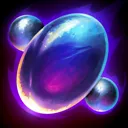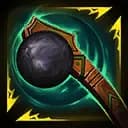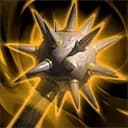Part One: Jungles















- Awilix
Part Two: Guide build Items Basic
- This is the basic item build for the jungle role in Smite 2.
Guide build Items Basic




- Multi Potion
The detailed item build for each God in Smite 2 (Role: Jungle)








Part Three: Gods Ability Order
- Coming soon.
Part Four: Introduction to core Jungle
In Smite 2, the jungle role is one of the most important positions. Junglers are roamers and gankers who focus on gaining gold by slaying Jungle Monsters and Enemy Gods. Their strength lies in their ability to flank and ambush enemies.
What makes a good jungler then?
Generally, the characteristics of a good jungler are high burst damage (early or late game), good or great mobility in their kit, good jungle clear, and an impactful ult in some way or another. Junglers like most gods have a pre-determined timeframe of the game in which they are the strongest.
The Jungle role in Smite 2 is one of the most dynamic and high-impact positions in the game. Unlike laners who focus on farming minions and controlling a specific area, Junglers move across the entire map, securing camps, ganking enemies, and contesting objectives. A skilled Jungler can dictate the pace of the game, enabling their team to gain an advantage through aggressive plays and objective control.
The Core Responsibilities of a Jungler: may include, but are not limited to: Farming efficiently, ganking and applying pressure, warding, and providing map awareness.
Junglers do not rely on minions for gold and XP but instead clear jungle camps scattered around the map. Efficient jungle pathing ensures that you get ahead in levels and gold while also being available for ganks.
A well-timed gank can secure a kill, force enemy relics, or pressure an objective. The best Junglers know when and where to gank, balancing farm with aggression.
Warding the jungle prevents enemy invades and helps secure objectives, as well as hindering the enemy Jungler from ganking your teammates. Paying attention to enemy positioning and letting your teammates know through callouts or VGS can also be a core part of Jungling.
The Attributes of a Good Jungler Player:
- To play Jungle effectively, you need to develop certain skills:
Map Awareness & Decision Making
- Knowing when to gank, farm, or sneak an objective (or fight over one) is critical.
- Keeping track of enemy positions, buffs, and timers helps you make good judgement calls.
- Always be aware of which lanes are pushed up - or have easily gankable gods.
Mechanics & God Knowledge
- Most Junglers rely on burst damage—knowing your god’s full damage potential in a kit dump is incredibly important to evaluate whether you can kill someone in a timely fashion.
- Some gods have a strong early, and a weaker late, and others have a weak early, and a strong late. Knowing both yours and your own enemies is very important for evaluating ganks.
Game Sense
- No two games are the same - being able to play from behind, ahead, even, into certain types of team compositions or with incredibly bad/good teammates are all very important.
- Being able to evaluate when to sit on a lane and when to basically abandon it are also incredibly important. You cannot be in 3 places at once, and cannot win 3 lanes at the same time for people.
Common Mistakes Newer Junglers Make:
- Farming too much and never ganking
- Ganking too often and falling behind
- Never shotcalling
- Not knowing when to give up on a gank
- Sitting on the wrong lane(s)
- Playing gods with weak earlies and trying to fight early
- Ganking a lane that is certifiably lost instead of helping a winning lane snowball.

Part Five: Jungle Vocabulary
Jungling Vocabulary and Associated Terms:
Gank(s) or Ganking: Attacking an enemy (usually in a Lane) from an unexpected angle/position/time.
Split: Usually in the context of splitting farm, it just means you share the XP & Gold values of the camp/wave with a teammate.
Camps: The main source of farm for Junglers, the majority of the Camps in the Jungle are intended for the Jungler to drop or split, barring some exceptions.
Buffs: Jungle camps that drop temporary stat boosts that last for a certain amount of time before expiring, or expiring upon death.
Neutral Farm: Camps that are in the middle of the map, and are not directly placed in one team's Jungle. They are intended to be fought over, or pressured around.
Contested Farm: See above.
Timers: How long it takes a camp to respawn after clearing every mob in the camp. If someone asks you to "be on the timer", they want you to be there as soon as it spawns.
Clear: The amount of time/effort it takes to clear (in this context) a camp. A god with bad clear will usually be a bad Jungler.
Invade: Going into the enemy Jungle and killing one (or more) of their camps.
Secure: Ensuring you or your team get the last hit on a camp/buff or an objective.
Overextended: When a god is pushed up so far down lane, it's harder for them to make it back to tower if you were to Gank them, and therefore easier to punish.
Collapse: As a team, picking a person(s) and converging on them with the intent to kill them.
Counter-Gank: A gank responding to an initial gank, in hopes of turning a fight.
Steal: Taking an objective by securing the last hit with an ability.
Power Farm: Focusing entirely on farming instead of ganking early.
Hypercarry: A god (in this context, a Jungler) who scales particularly hard in the late-game and can carry teamfights, usually with the trade-off of a weaker early.
Snowball: Getting an early lead (via kills or invading) and using it to dominate the rest of the game.
Backline: A team's damage dealers (Mid laners, ADCs).
Frontline: A team's tanks (Support, Solo).
Pick: Catching an enemy out of position and killing them before a teamfight can occur.
AA Cancel (short for Autoattack Cancel): Every basic attack (AA) in Smite 2 has an animation time before the next action can be taken. However, damage is applied before the full animation finishes. AA Cancelling works by cutting off the end of the animation, allowing a faster transition into another attack or ability. This means you can get in more damage within a shorter window, improving your DPS on a lot of gods.
-
Auto-attack an enemy → Wait until the damage registers.
-
Immediately cast an ability → This cancels the remaining attack animation.
-
Follow up with another auto-attack or ability → Repeat as needed.
Starts change often and are very fluid, but they can also settle in-place for months at a time. If you mess up a start early for yourself or your team - it can absolutely ruin the early game for yourself and others. Always be aware of what the current start is before stepping back into Conquest.
Currently, Junglers have about 2 to 3 options for starts. Provided are two examples of the most common or popular starts.
Part Six: Guide to Playing the Jungle Role in Smite 2
- Start One (Speed Buff Start)
Start at the Back Harpies, then go to the Speed Buff, then Ward Camp, then Oracles/Mid Wave, then the Rotating Camp, then the Red Buff, then the Ward Camp, then the Scorpion Camp, and finally the Back Harpies.

- Start Two (Red Buff Start)
Start at the Red Buff, then go to the Back Harpies, then the Ward Camp, then the Rotating Camp/Mid Wave, then the Oracles, then the Ward Camp, then the Speed Buff, then the Back Harpies, move onto the next Back Harpies, and finally finish at the Scorpion Camp.

While these are two of the more common starts, there are still more options available. Some require coordination with your team, and others can be done by yourself. As long as you understand the requirements for a "good" Jungle start, you can experiment a little.
Part Seven: Camp Rundown CAMP and Infamy System
- Speed Buff
This buff is almost universally intended for the Jungler. It has a respawn time of 180 seconds.





- Red Buff
This buff is intended for the Mid laner, but can be grabbed by the Jungler the first 1 or 2 drops, as the Jungler will usually get more value out of it in the early game. It has a respawn time of 180 seconds.





- Blue Buff
This buff is intended for the Solo laner throughout the game. Ideally, you would split this camp with the Solo laner. It has a respawn time of 180 seconds.





- Purple Buff
This camp is intended for the ADC. Usually, you will avoid dropping this camp unless it is being contested by the enemy team. It has a respawn time of 180s.





- Side Harpies
These camps are intended for the laners, but can be done if your laner isn't that bothered about it. They have a respawn time of 120 seconds.


- Ward Camp
These are intended for the Jungler or the Mid laner, but primarily the Jungler. They have a respawn time of 240 seconds. It drops a singular ward that functions as a regular ward in every sense except the icon it uses.

- Oracles
These are intended for the Mid laner, or the Jungler. They have a respawn time of 180 seconds.

- Rotating Camp
The one by Mid lane is intended for the Mid laner, or the Jungler. The one by Duo is intended for the ADC, but occasionally can be done by the Jungler. These also have a 180 second respawn timer.


- Scorpion Camp
This camp is intended for the Jungler. It has a respawn time of 240 seconds. It drops a singlular ward that pings every enemy on the map (but doesn't tell you which one they are) for a few seconds.

- Roaming Harpies
These can be found roaming around both the left-side jungle (on both sides, around Speed Buff) and the right side jungle (between Red and Blue Buff).

- Rogue Camp
These are intended for the Laners, but can be done by the Jungle more rarely. They have a respawn time of 90 seconds.

- Infamy System
Infamy levels are a point-based system that determines the level of the buff that the camp will drop. Infamy is generated for a team anytime a Buff Camp of the corresponding type dies anywhere on the map. Defeating enemy camps in this way denies them Infamy and grants it to your own team's camps. To quote the official source:
Each creature falls into a specific category that rewards different amounts of Infamy:
- Large creatures grant 40 Infamy.
- Small creatures grant 15 Infamy.
- Very small creatures grant 5 Infamy.
Upon reaching a new Infamy level, the jungle camp will increase in Infamy rank and start granting new rewards.
The Infamy level thresholds are as follows:
- Level 0: All camps start here
- Level 1: 210 Infamy
- Level 2: 560 Infamy
- Level 3: 980 Infamy
Part Eight: Ganks
- Understanding Ganks
Ganking is the act of ambushing an enemy in a lane, often from the jungle. A successful gank doesn't always have to result in the enemy dying, although this is usually the best outcome.
Ideally you achieve one of these things:
Forcing relics/an Ultimate ability - these can allow for a followup gank later and result in a more successful kill, or allow your laner to kill them by themselves later.
Creating pressure - This can be done in a multitude of ways, but allowing your laner to play up and get more neutral farm while the enemy laner is worried about you coming back and punishing them is a common occurence of this.
Getting a kill - This is self-explanatory.
Forcing a back - Similar to creating pressure, for example, forcing the enemy ADC to back while your team is in position and still healthy, can let you get relatively safe Gold Furies, or push towers.
- Key Indicators of a Good Gank
Enemy is pushed up too far/overextended - Whether in lane or in your jungle, punishing someone for being at your team's towerline or far away from the safety of their team or a tower can be incredibly easy at times.
Enemy has used their escape/relic/ultimate - If you want to gank a Neith, and you see her backflip, you can often run her down and force her to use her relic or die. If you run at her and she has it up, you might need more options to keep threatening her, such as blink, your ultimate, etc.
Level or item advantage - If you are 4 levels up on someone, or a couple items up on them - it can be incredibly easy to kill them compared to if you were on even footing with them. Conversely, if you are under their level by a decent margin, you will be at a large disadvantage.
- Gank if...
- Your teammates need help and are being pressured
- You see an easy kill opportunity in a lane
- Your camps are already cleared, and there’s nothing to farm
- It's around the area where your available farm is
- Farm If...
- You are noticeably behind in levels or gold
- No lanes are in a good position for a gank
- Your team is winning fights without you
- More then a couple camps are up
Part Nine: The Jungler role in Smite 2 features various Gods with different playstyles
Currently, these are the most conventional solid Junglers. You can find success with some other gods as well, such as Danza or Ymir, but I generally would not recommend them at the start.
[Achilles]
- High mobility, flexibility to be full damage or bruiser jungle, execute, incredible Hydra's Lament user, suprisingly good auto-attack chain
[Aladdin]
- Incredibly high mobility, weak early but hard hitting late, limited CC abilities, Ultimate can be hard to use and very weak early-mid game, flexibilty to be built Strength or Intelligence with corresponding pros and cons, great Polynomicon user, auto-attack chain is great for jungle clear
[Amaterasu]
- With aspect becomes one of the hardest hitting Junglers in the game and one of the few AA ones, good rundown and chase with a useful teamfight ult
[Athena]
- With aspect and one of two or three builds, her Reach combos can delete people late-game with little comparison, decent mobility, global ult, good Hydra's Lament/Polynomicon user, insane late-game burst
[Awilix]
- One of the strongest counterpick Jungler options available, completely invalidates certain gods with leaps and plays incredibly well with others, high mobility, good CC, usually hits like a truck once you get a few items online
[Cabrakan]
- Incredible user of Polynomicon and Bumba's Hammer, some of the most plentiful CC to offer, good clear, ult that is almost a death sentence to immobile gods, insane burst mid-late game
[Fenrir]
- Very mobile, hard hitting, can be reliably built bruiser, full strength, autoattack/autoattack bruiser, etc, useful beads-burning ult, can be hard to play into certain comps with cripples or any Hard CC that can reliably stop his Brutalize
[Hercules]
- Hits like a truck, great CC, relatively safe and high pressure, trades incredibly well at all stages of the game
[Hun Batz]
- Incredibly useful utility/teamfight ult, very mobile, good burst with proper autoattack cancelling
[Loki]
- Most consistently strong Jungler in Smite 2's lifespan, good at every stage of the game, high burst, good clear, great autoattack cancels, high mobility, great at farming players of lower skill levels, only falls off at higher levels of play, incredibly loud invisibility noise that can be annoying to play around
[Nemesis]
- Weaker jungler, but still decent into certain matchups and lower levels of play, best run with a decent Crit build, hard to 1v1 (aspect or not), decent chase, incredible shred, okay mobility, heavily invalidated by slow immunity abilities and items
[Odin]
- Weaker jungler, mostly a counterpick option in a Ranked/Draft environment due to the utility of his Ultimate ability, decent mobility, good lockdown, decent burst, easy to focus and kill once he Birdbombs into a fight
[Pele]
- Decent jungler, good mobility, great chase and disruption, easy to blowup once she ults into a fight, usually does best in bruiser metas historically
[Susano]
- Decent jungler, great mobility and chase, good burst when using proper autoattack canceling (he is THE aa cancel jungler)
[Thanatos]
- Strong early, intends to snowball and snowballs HARD if he does, execute, good chase, CC combo can secure many kills if used properly, great Hydra's Lament user, requires the ability to consistently hit his skillshot 1st ability, incredibly loud and forecasting ultimate ability
[Thor]
- Weaker jungler (without aspect), with aspect and running a bruiser build he is great at disruption and lockdown, great mobility, useful CC and utility, burst can be somewhat high, ult is slow and easy to predict/dodge, usually has a weaker early game
